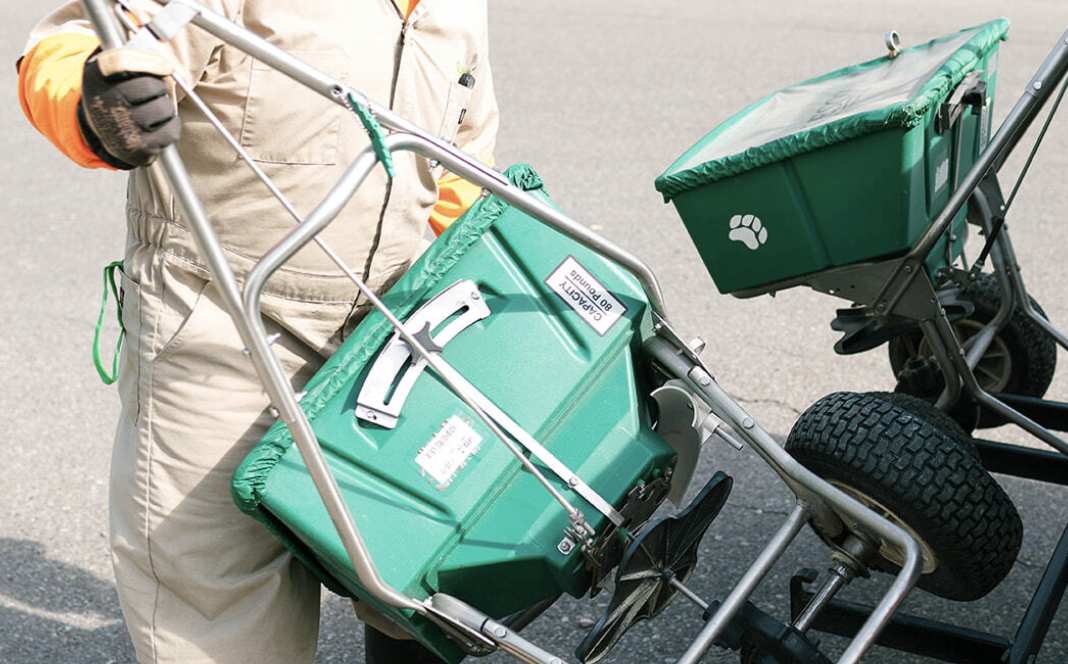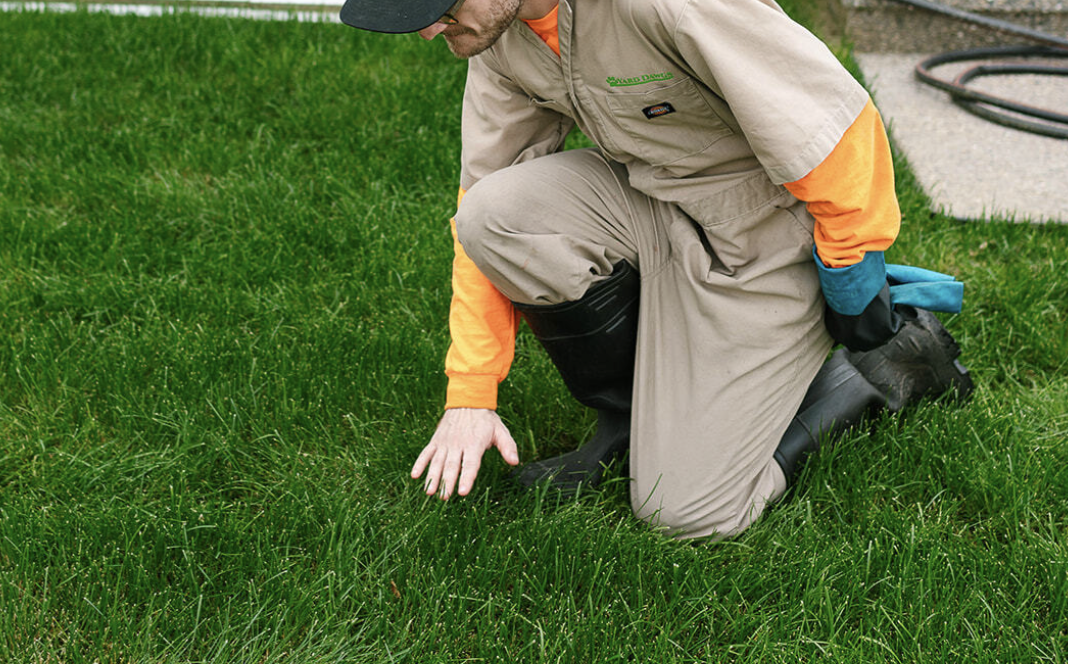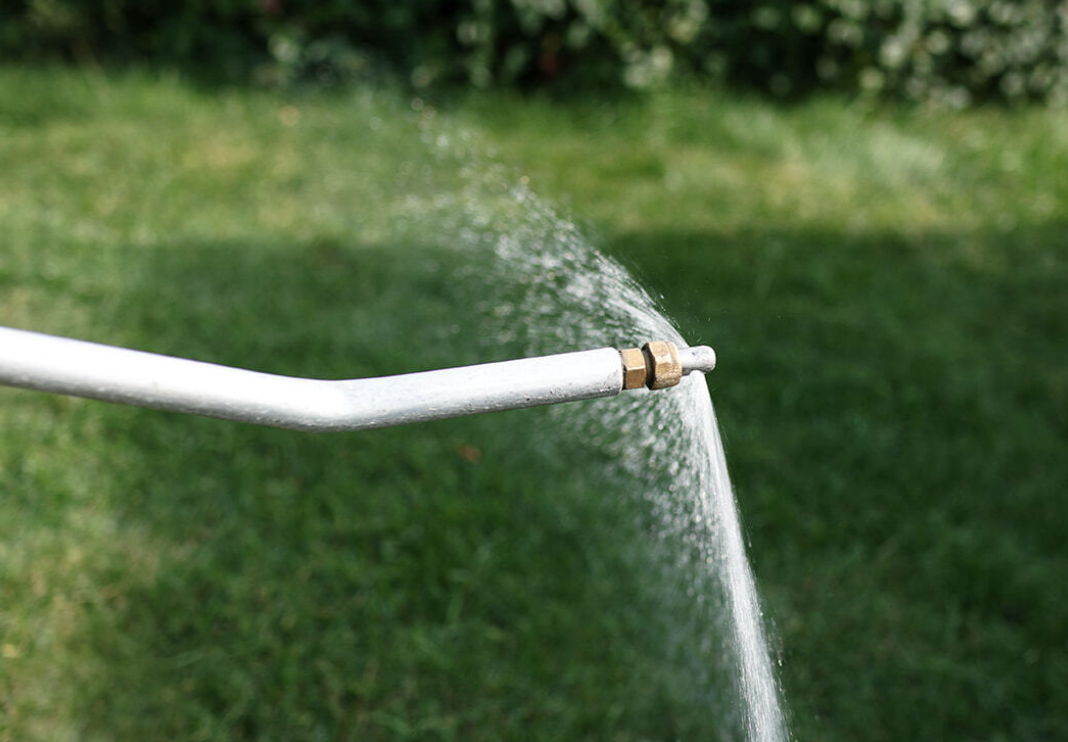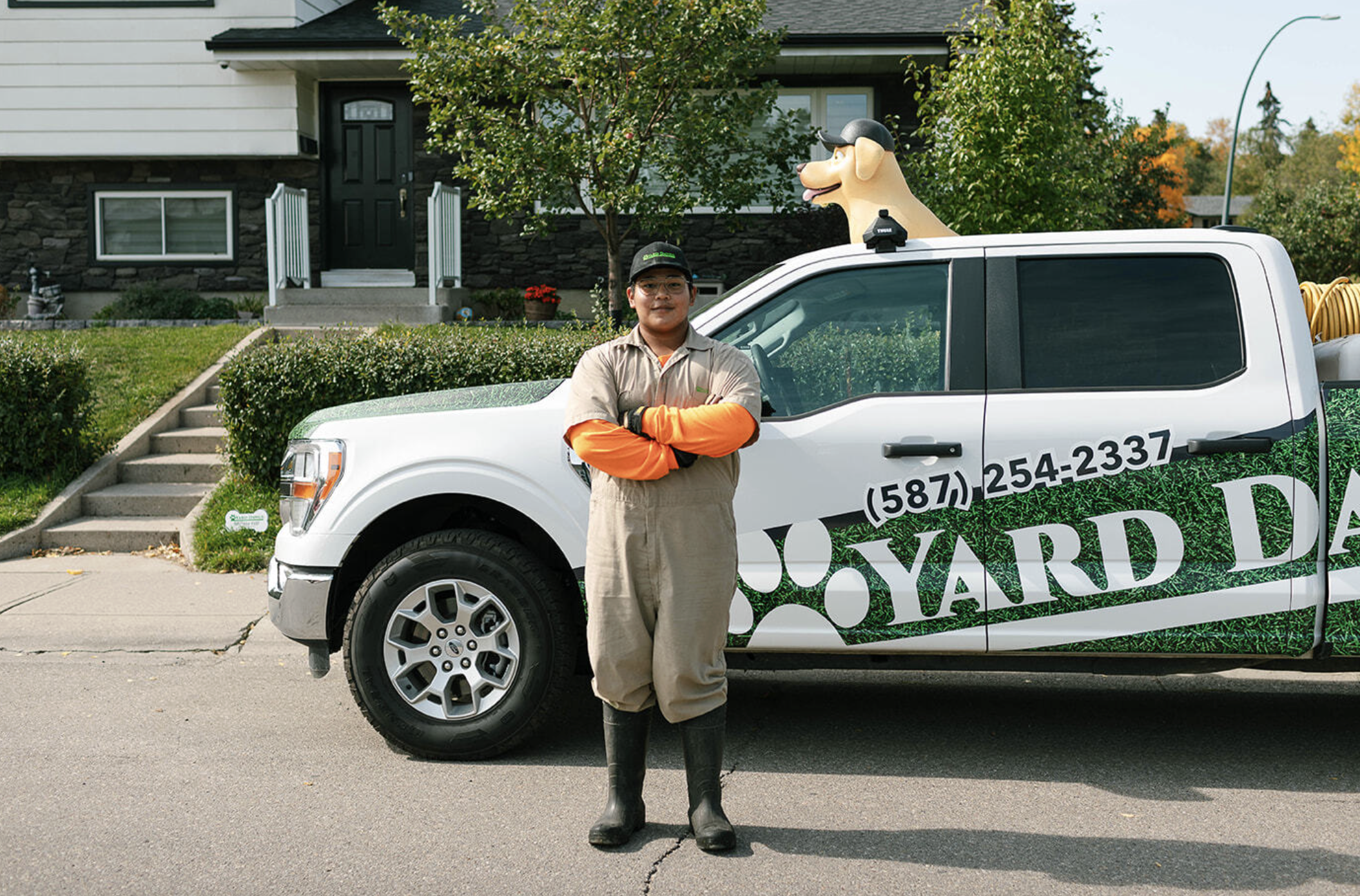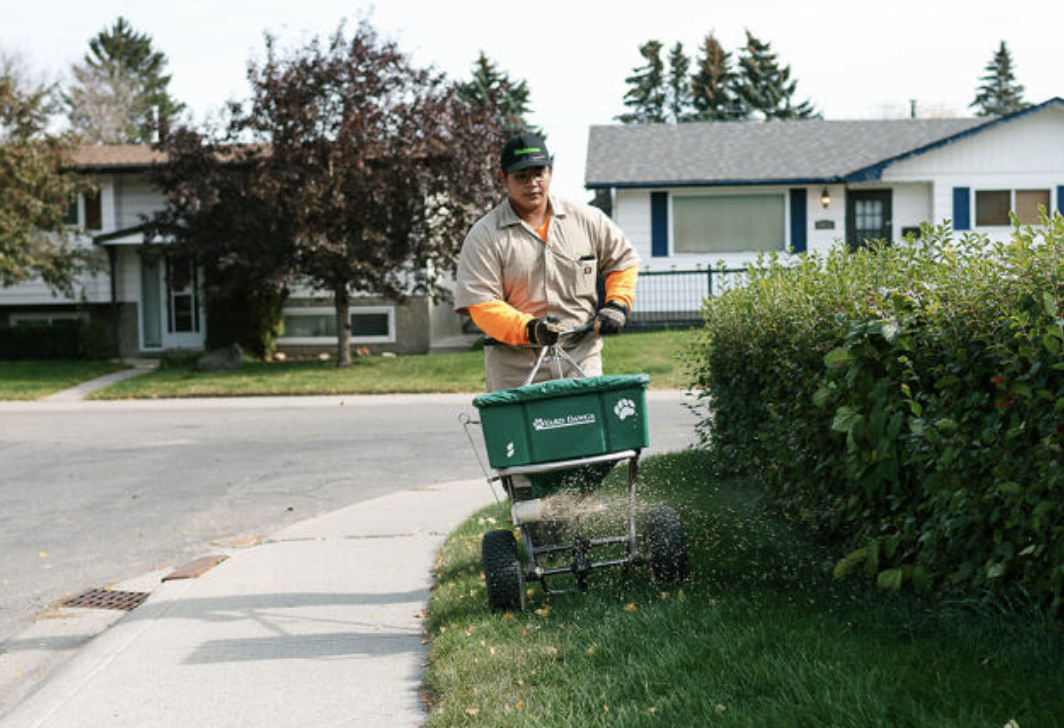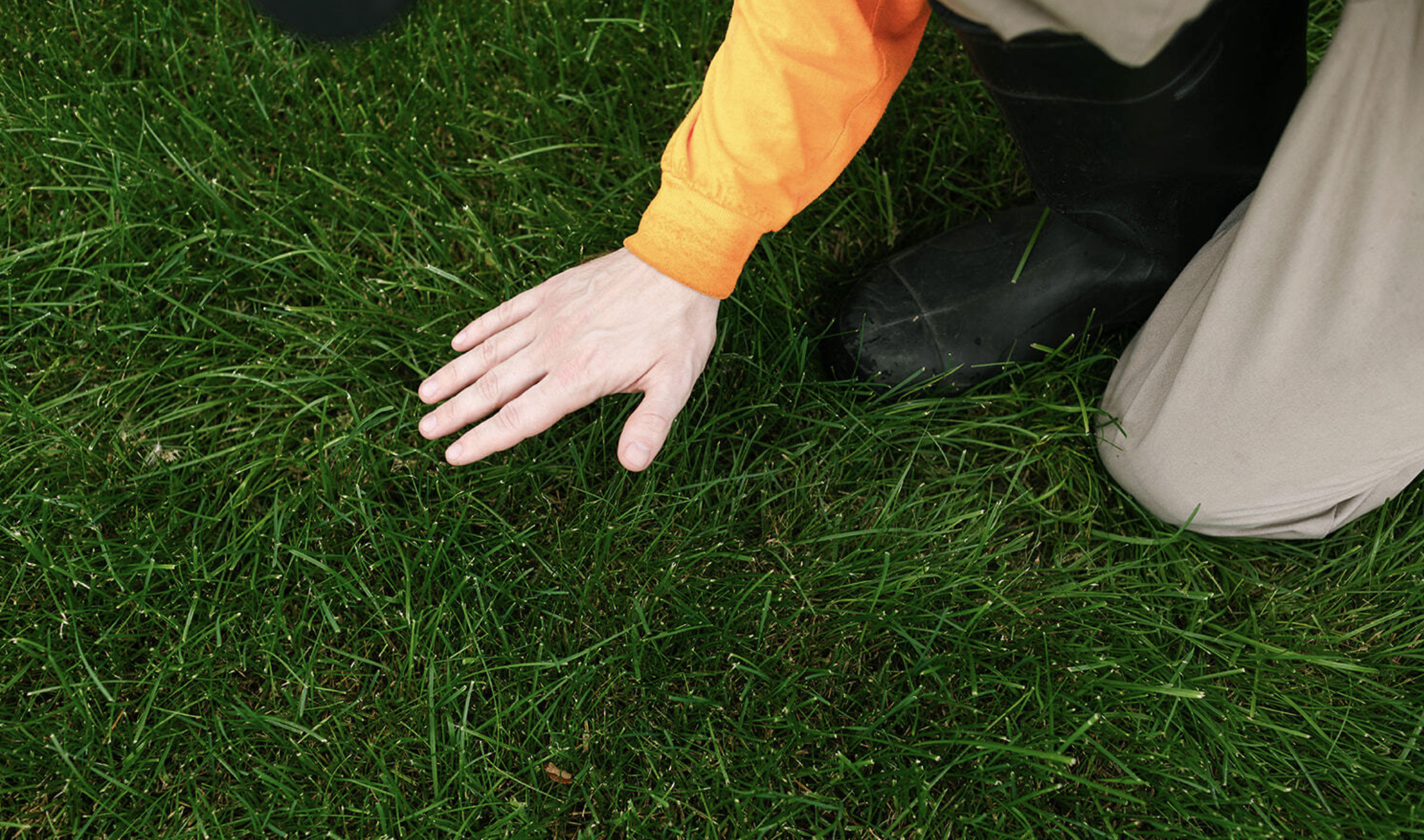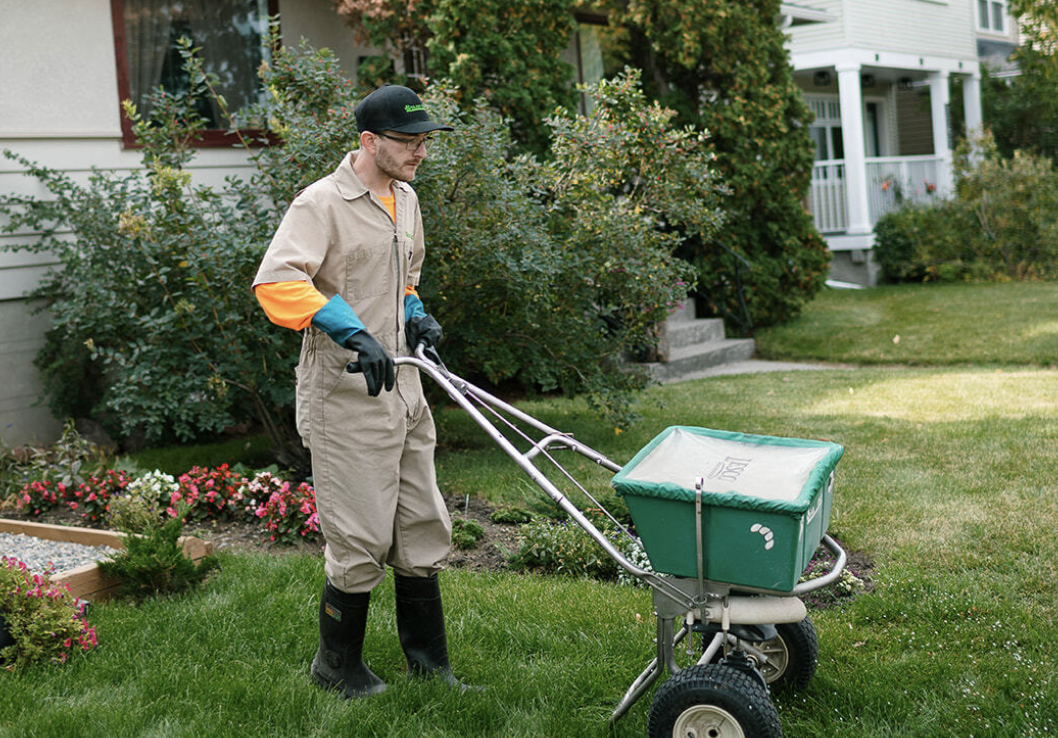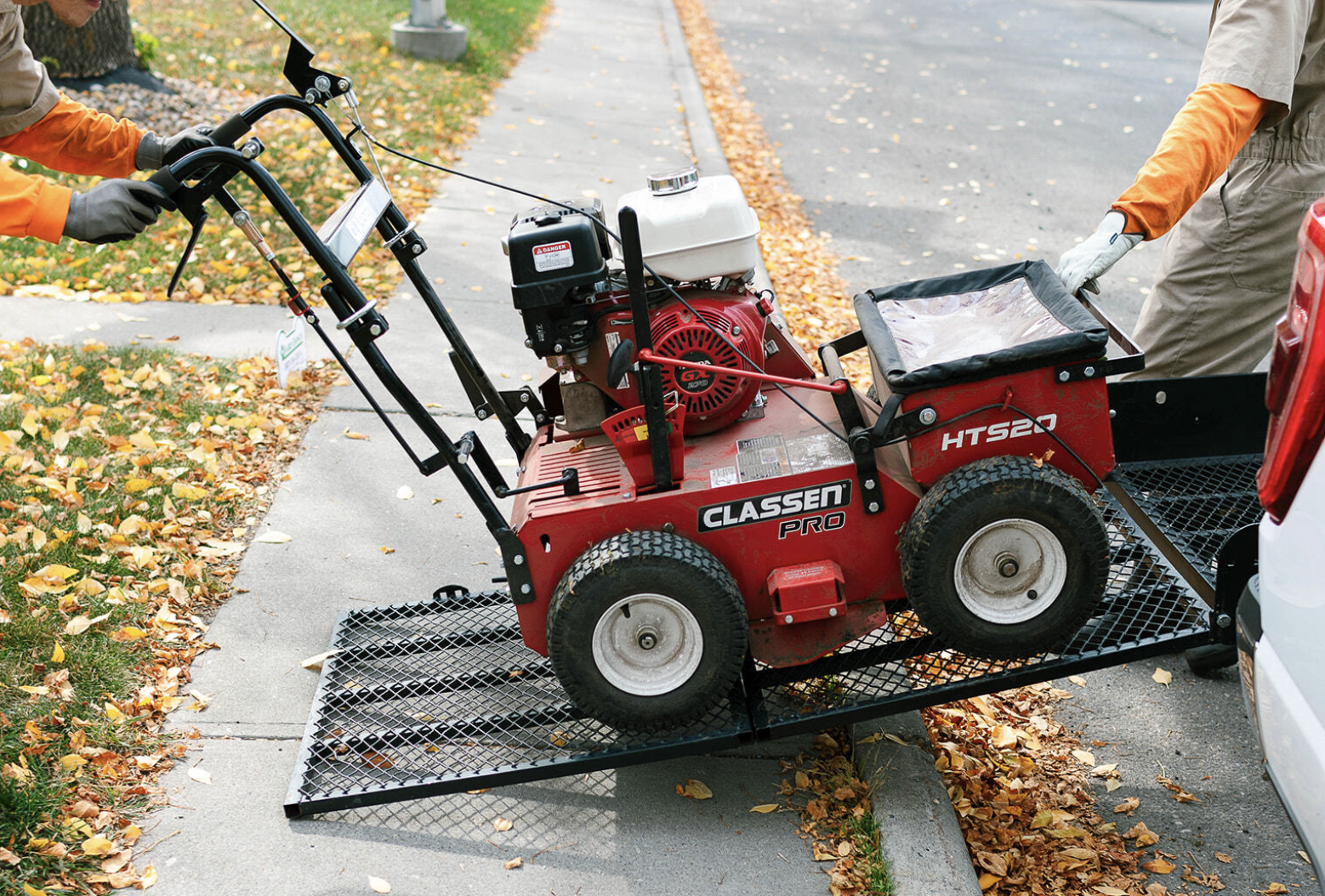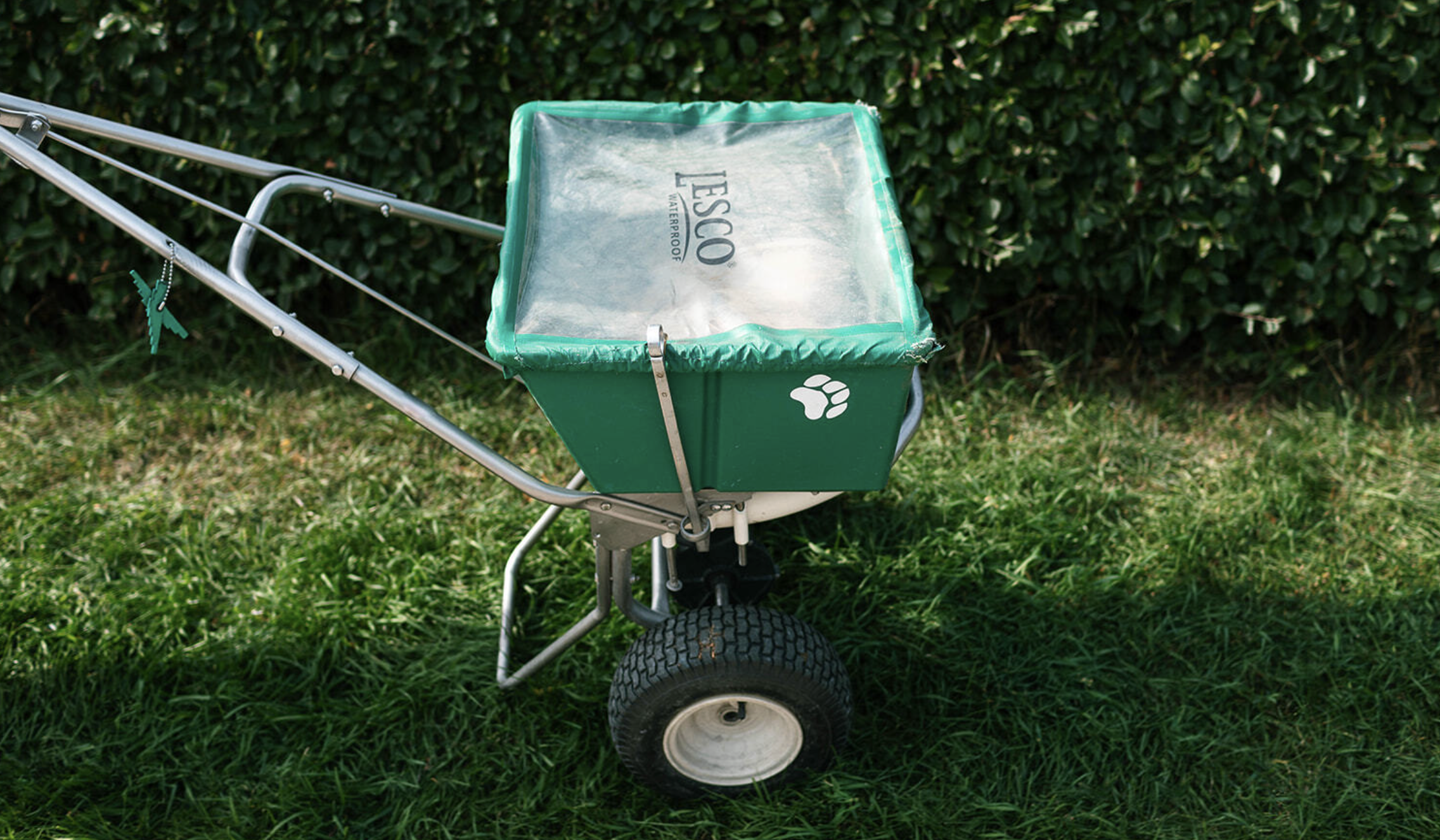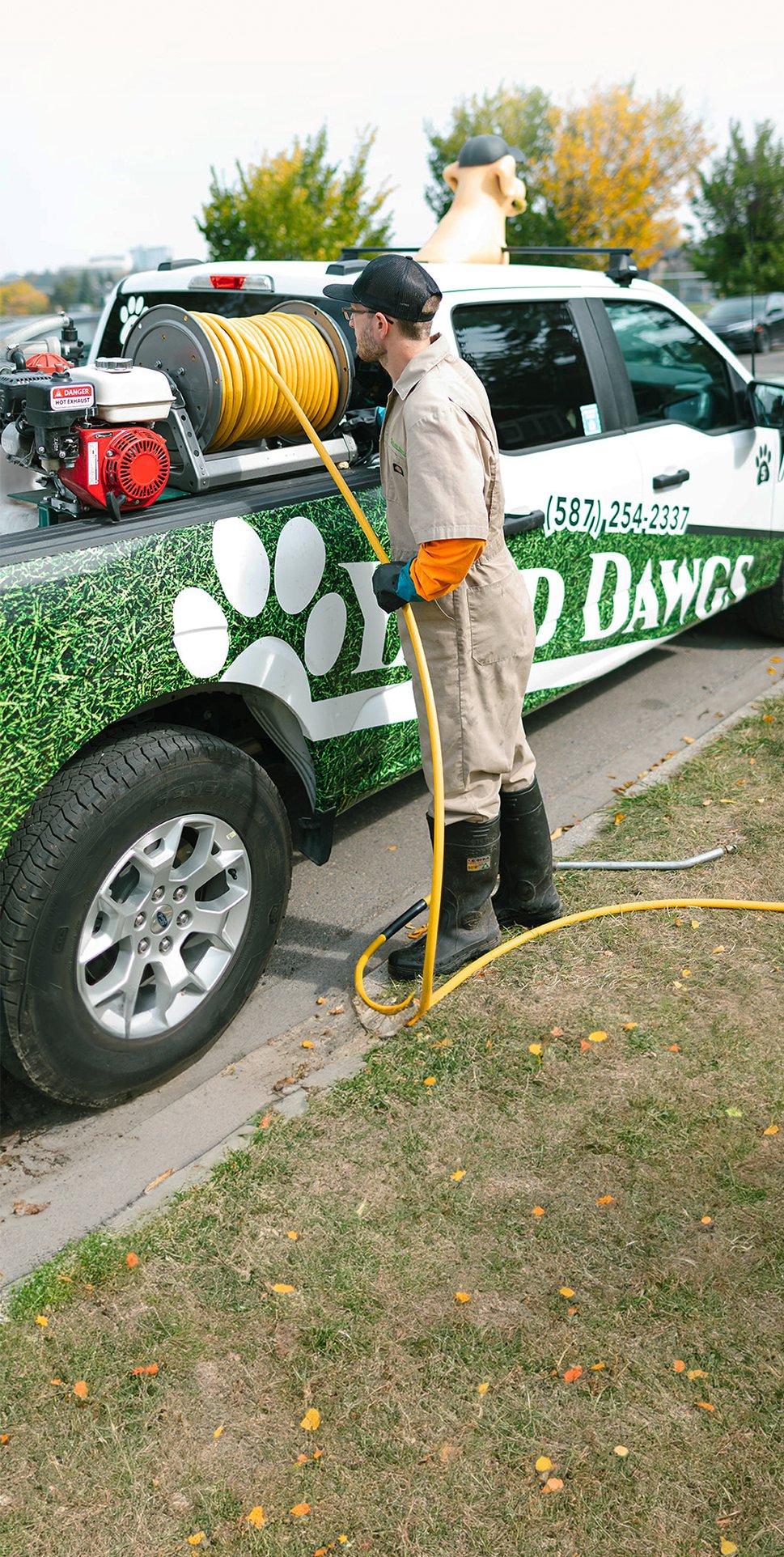Having a beautiful lawn comes at a price. Either you spend a moderate amount of money (about $80-150) and spend a good amount of time doing it yourself, or you hire a lawn care company to handle it for about $350 per season.
It’s a question of how much time are you willing to invest in it, can you properly do it or do you need help, and is it something you enjoy doing?
Regardless of if you do it yourself or hire some help, your goal is the same: Have a beautiful green lawn with no weeds. A weed free lawn comes down to prevention and a strategy for removal if they begin to grow. This blog will go over strategies on how to complete both so that you can maximize your chances of success.

The Benefits Of A Weed Free Lawn
There are two main reasons why people want to see green grass and not much else on their turf. The first is appearance: they look bad. People don’t want yellow heads sticking up everywhere from dandelions, painful shrubs growing up from thistles, bunchy short plants growing like clover, and invasive purple eyesores like creeping bellflower spouting up everywhere. Weeds are essentially like acne; natural yet unwanted.
The Yard Dawgs specialty is ensuring the lawns we service stay green and weed free all season long.
The second reason to go weed free is that weeds are invasive by nature; they want to grow as much at possible at the expense of other plants around it. It’s a dawg eat dawg world when it comes to lawn weeds. Whenever a drop of water, nutrient, or beam of sunlight comes down it’s a big competition for who gets it. Your grass roots are going head-to-head with the roots of weeds.
If you let nature take its course, unfortunately the weeds will win. They are a yearly problem for millions of homeowners everywhere. Weeds also reproduce much more rapidly than your lawn's grass. A single dandelion can produce up to 200 seeds, which is potential for 200 more dandelions.
Your grass cannot thrive so long as weeds are there stealing nutrients from your turf. The only way to have flourishing grass is to minimize the potential for weeds and do it without harming your lawn.
Make Sure You Don't Do This!
Often people turn to the internet asking, “how do you kill weeds” and they come across several solutions like:
- RoundUp
- Horticultural Vinegar
- Boiling Water
- Salt Water
- Gasoline
While it’s true that these methods will kill the weeds, do not spray these on your weeds if they are within your lawn. These methods will work, but they will kill EVERYTHING as a result. We have people call every year saying, “I sprayed weed killer on my lawn, and I have white/yellow patches everywhere now”. They used a product listed above and that's why it killed everything!
Only use these products on driveways, back alleys, rock patios or gravel pads where there isn't any grass. The good news is that you can kill weeds within your grass if you follow the instructions below. We will break this down into two sections:
Weed Prevention - to stop weeds from showing up in the first place
Weed Control - to tackle the weeds if they’ve already arrived at the party
Lawn Weed Control
Lawn weed control is not just a one-time task—it’s a season-long commitment that involves both prevention and timely removal. Effective weed control means regularly monitoring your lawn for signs of invasive species and acting quickly. Early intervention is key. The combination of seasonal aeration, proper fertilization, and consistent watering creates a thick, healthy turf that naturally resists weed growth.
Moreover, consistent mowing practices and annual overseeding improve your lawn’s density, making it harder for weeds to take hold. If weeds do manage to sprout, selective herbicides should be your first step—not general-purpose killers like RoundUp that can damage your grass. The goal is to develop a lawn care routine that suppresses weeds long-term and supports a thriving, green lawn.
Top 4 Tips For Weed Prevention
1. Aerate Every Year
Aeration is one of the best practices you can do for your lawn. Weeds love compact soil and dry conditions, so aerating hits the nail right on the head. It relieves soil compaction, promotes airflow, and increases water retention within your soil. You should aerate your lawn every Fall.
If you aerate in the Spring you're opening your lawn up to weed germination early in the season. Stick to a Fall aeration year-to-year.
2. Fertilize Your Lawn Every Season
While most “pre-emergent” weed control strategies aren’t available in Canada, using a high-quality fertilizer will give your grass the nutrients it needs to thrive.
3. Water, Water, Water
Weeds love dry weather conditions because they grow very efficiently with minimal water. By ensuring you're watering your lawn for 30 minutes, at least three times per week, you’re giving your grass a chance to grow and fight back against the weeds.
4. Overseed Every Spring & Fall
Your lawn is an organic entity which means it grows and it eventually dies. Overseeding your lawn is the process of spreading grass seed across your property. For best results, seed right after you aerate your lawn and use the same type of grass seed that your lawn currently is. Water generously and your lawn will thank you!
Top 4 Tips to Eliminate Existing Weeds
1. Use A Selective Herbicide (2-4D Active Ingredient)
You want to choose a weed killer which has been engineered to kill the weed but not that the grass you have. Selective means it won't kill all plants it's applied to. 2,4-D is the more common selective herbicide. Using it properly has minimal risks and is extremely effective at killing weeds without killing your grass.
Selective herbicide works by entering the leaf of the weed and changing the way the plant handles nutrients. It causes it to literally grow and age itself to death. Selective herbicides typically take 4-14 days to see very strong results but can literally start to work overnight. It is an effective way to kill 99% of broadleaf weeds down to the root so that the same weed shouldn’t be a problem in the future.
If you want to do this yourself the products, we recommend would be either Weed B Gon or Killex. These products can be purchased at a local hardware store such as Home Depot or Lowe's.
2. Pulling The Weeds By Hand
Either by hand, or with a removal tool, pulling the weed out of the ground by the root and tossing it in your compost bin is an instant remedy. Weeds fight this by purposely breaking at the surface of the ground so that their roots live to grow another day.
Using a flathead screwdriver, a ford, or a special tool designed for weed pulling is the best way to remove the entire weed from head to toe. Make sure you wear gloves while doing so, as some weeds have prickly surfaces that can really cause a sting.
It’s important to remember that pulling the weed by the leaves or step will cause it to snap. So long as the roots survive, you can bet that weed will be back in a matter of days. The tools you use must completely remove the weed from the ground so that it’s gone.
For dandelions, do this while the heads are yellow since once, they are white, they will spread seeds like crazy upon movement. If your kids are going to blow them into the wind, do it at the local field, not on your lawn!
3. Mowing Properly and Regularly
Your grass should be cut every week during the Spring, and at least every ten days during the summer. Mulching the grass back into the lawn (not using a bag) helps spread grass seed and increase turf thickness. Your blades need to be sharpened yearly and never cut the grass more than 1/3 of its total length.
Every time your mow your lawn, you also mow the weeds which takes them out of the picture of a couple days, but don’t forget that the roots are still alive and well and they will try to grow back.
4. Re Sod Your Lawn
This is a last-case scenario for lawns that have been neglected for too long. If weeds have completely taken over and there is minimal grass left to fight back, you may need to consider having a landscape company come in, tear the sod, regrade with soil, and re sod. This is very expensive and can run at about $2.20-4 per square foot depending on the yard access and local dump fees for sod. Do not re sod unless you’ve exhausted all other options.
Best Weed Killer for Lawns
When looking for the best weed killer for lawn use, it’s important to choose products that are both effective and safe for your grass. Selective herbicides are your best friend here—they target broadleaf weeds like dandelions, clover, and thistle without harming the grass around them. Products such as Killex and Weed B Gon contain active ingredients like 2,4-D, which are engineered specifically to attack weeds at the root level while leaving your turf untouched.
Best Dandelion Killer That Won’t Kill Grass
Dandelions are one of the most common and persistent weeds in Canadian lawns. The best dandelion killer that won’t kill grass will always be a selective herbicide. Dandelions have deep taproots, so it’s crucial to use a solution that kills the weed down to the root. Products like Weed B Gon are formulated to destroy dandelions effectively while preserving your grass. For even better results, apply the herbicide when the dandelions are actively growing and before they go to seed—this prevents the spread of hundreds of new weeds.
Conclusion
We all want a beautiful lawn with no weeds. Remember, stay away from RoundUp and household chemical remedies if you’re dealing with weeds within your grass because the solution is designed to kill all the plants it touches.
Some great selective herbicides at the store are “Killex” and “Weed B Gone”. If you’re hiring a company, choose one which focuses on weed control and fertilizing services with a strong reputation and many reviews from real clients. Don’t select a company that does it all and just so happens to provide weed control services. You want a company that is certified and focuses exclusively on herbicides and lawn nutrition.
It’s important to remove weeds from your lawn because they steal nutrients from your grass and will eventually takeover if not dealt with. The nature of weeds is to spread and dominate. Once your lawn is taken, they will start attacking the nearest lawns in your neighbourhood and the consequences will only worsen.
Be a good neighbour and set yourself up for lawn care success by addressing the problem of weeds before they even appear. You can enjoy a beautiful lawn without losing all your free time, you can see great results without spending a fortune, and you can kill weeds without killing grass!


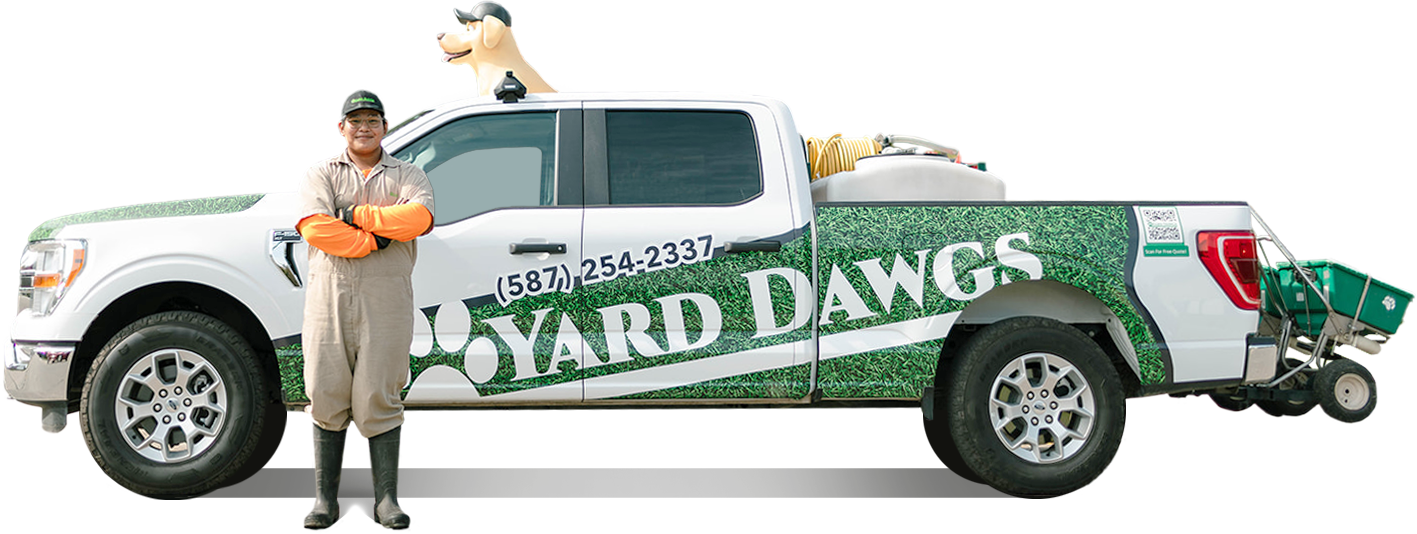


%20(28).png?width=725&name=Email%20Campaign%20Sizing%20(585%20%C3%97%20300%20px)%20(28).png)
.png)
